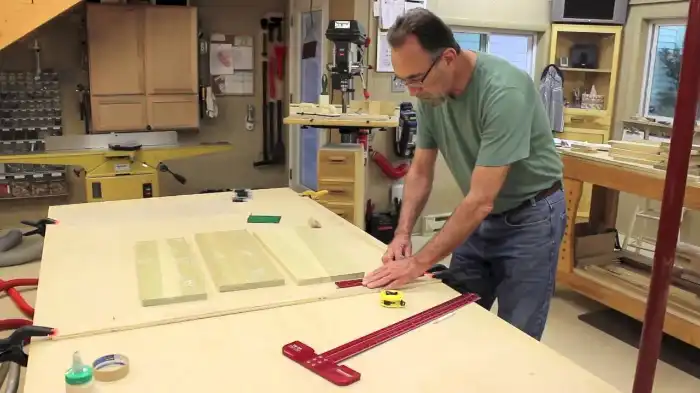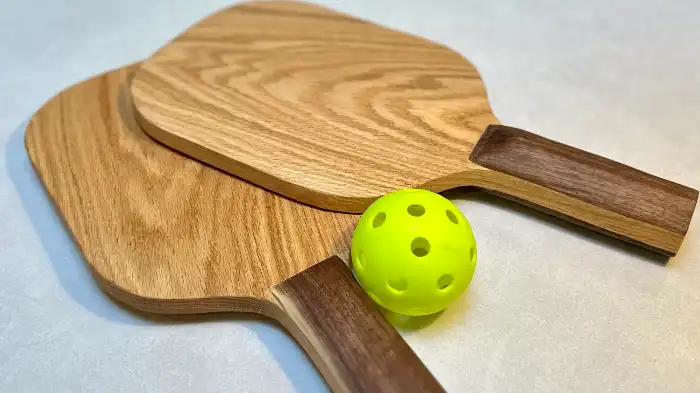Welcome to our guide on how to build your very own pickleball paddle! Pickleball is a popular sport that combines elements of tennis, badminton, and ping pong. Having a paddle that suits your playing style and preferences can greatly enhance your game.
By customizing your own paddle, you can achieve the perfect balance of control, power, and maneuverability. In this article, we will walk you through the process to Build Your Own Pickleball Paddle from start to finish.
How to Build Your Own Pickleball Paddle?
Materials Needed For DIY Pickleball Paddle

Before you start building your paddle, gather the necessary materials to Build Your Own Pickleball Paddle:
- Wooden paddle core
- Carbon fiber or fiberglass laminate sheets
- Grip tape
- Glue
- Saw
- Sandpaper
- Clamps
- Drill
- Screwdriver
Once you have all the materials ready, let’s move on to the next step on how to make a pickleball paddle.
Step 1: Cutting the Paddle Core
The first step is to cut your paddle core to the desired shape and size. Most pickleball paddles have a rectangular shape with rounded edges. Use a saw to carefully cut the wooden paddle core according to your preferred dimensions. Remember to take safety precautions and wear protective goggles.
Tip:
Measure and mark the dimensions on the paddle core before cutting to ensure accuracy.
Step 2: Sanding the Paddle Core
After cutting the paddle core, use sandpaper to smooth out any rough edges or surfaces. This will provide a better grip on the paddle and make it more comfortable to hold during play. Start with a coarse-grit sandpaper to remove any imperfections, then gradually move to a finer-grit sandpaper for a polished finish.
Step 3: Applying the Laminate Sheets
Now it’s time to add a laminate layer to the paddle core. Carbon fiber or fiberglass laminate sheets are commonly used for their strength and durability. Cut the sheets slightly larger than the paddle core to allow for trimming later. Apply a layer of glue to the paddle core and carefully place the laminate sheets on top, ensuring a smooth and wrinkle-free surface.
Tip:
Use clamps to hold the laminate sheets in place while the glue dries for better adhesion.
Step 4: Trimming the Laminate Sheets
Once the glue is fully dried, use a saw or a sharp knife to trim the excess laminate sheets around the edges of the paddle core. Be careful not to damage the wooden core while cutting.
Step 5: Adding the Grip Tape
The grip tape provides a comfortable and secure hold on the paddle. Start by measuring the length of the handle and cut the grip tape accordingly. Begin wrapping the grip tape from the base of the handle towards the top, ensuring a tight and even wrap. Secure the end of the grip tape with adhesive or electrical tape.
Tip:
Overlap each wrap slightly to avoid gaps or loose sections.

Step 6: Finishing Touches
Inspect your paddle for any rough spots or irregularities. Use sandpaper to smooth out any imperfections. Check the handle for a comfortable grip and make any necessary adjustments. Once you are satisfied with the final product, your custom pickleball paddle is ready to be put into action!
Conclusion
To build your own pickleball paddle can be a rewarding and enjoyable experience. By customizing the paddle according to your preferences and playing style, you can elevate your performance on the court.
For DIY pickleball paddle, remember to take your time during each step, ensuring precision and accuracy in your measurements and cuts. With the right materials and a little effort, you can create a paddle that feels like an extension of your arm and enhances your pickleball game. So go ahead, get creative, and build your very own pickleball paddle!
Frequently Asked Questions
– The most common materials used for pickleball paddles are graphite, composite, and wood. Graphite paddles are known for their lightweight and strength, composite paddles offer a balance between power and control, while wood paddles provide a classic, affordable option.
– Absolutely! Customizing the grip size of your paddle is one of the advantages of building your own. You can choose from various grip sizes, such as smaller sizes for better control or larger sizes for added comfort.
– Building a pickleball paddle from scratch may require some technical skills and knowledge of paddle construction. However, there are DIY kits available that provide step-by-step instructions and all the necessary components to make the process easier for beginners.
– Certainly! One of the benefits of building your own pickleball paddle is the ability to add personal touches to its design. From colorful patterns to personalized decals, you can get creative and make your paddle truly one-of-a-kind.
– Homemade pickleball paddles can offer a unique experience tailored to your preferences. By building your own, you can customize the weight, balance, grip, and other features to suit your playing style. However, it’s important to note that store-bought paddles often undergo extensive testing and research to ensure optimal performance, so they may have more advanced technologies and materials.

